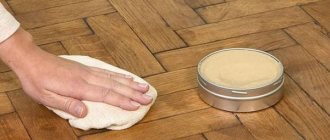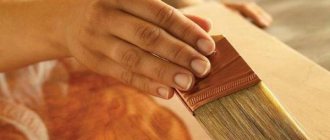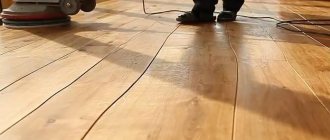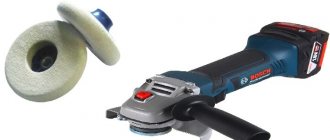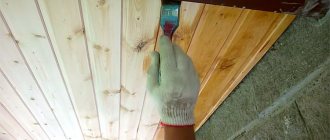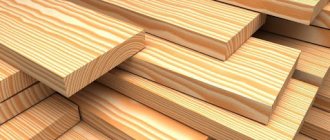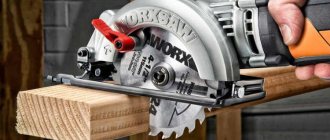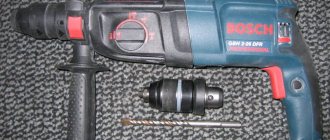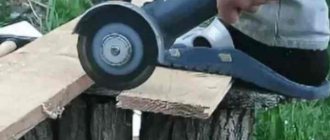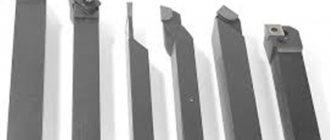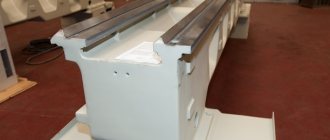For modern furniture, polishing is not the most suitable surface treatment method. In fashion now is the soft shine of a wax or matte shellac-based coating. But for many pieces of old furniture, a mirrored sparkling surface is a tribute to style. Therefore, when caring for furniture and restoring it, it is often impossible to do without renewing the old polish, and sometimes - after repair - applying a new one in the traditional way.
How to polish wood
Polishing is a labor-intensive operation even for a specialist. Naturally, a beginner may have problems mastering it. But with practice, even a home master can achieve satisfactory results. In any case, it's worth trying to polish a couple of unnecessary pieces of plywood before you start working on furniture.
The ancient method of surface treatment is now used less and less, and it is not always easy to find the right materials. To obtain a flawless finish, you will need an alkaline polish and its corresponding solvent, as well as powdered pumice and polishing oil. All this can be bought at building materials stores. In addition, you will need a special primer composition. Like the matte finish solution, shellac polish is applied with a swab made from cotton wool, an old wool sock and a small piece of thin linen or cotton fabric.
The most difficult type of surface treatment for veneer and solid wood is still polishing. Today there are many clear varnishes available for creating shiny protective coatings. Those who want to refurbish old furniture should become familiar with the technique of polishing it.
What's better for your health?
Polishing oil can be easily removed with gasoline. However, it is better to do this with a clean cloth. True, you will have to spend more time, but there is no harm to your health.
Application of polishing for finishing
For finishing, several methods are used, for which substances are used:
When finishing wood products, when varnish is used for polishing, a protective layer is formed that gives the surface a marketable appearance. The polishing process involves applying a special polish composition containing three times less resin than varnish. The coating formed on wood has a transparent structure and a glossy tint.
When choosing a finishing and polishing method, the type of wood must be taken into account. The most suitable types of wood for making furniture are:
Also widely used, but quite labor-intensive in processing the rock:
- oak;
- pine trees
Mechanized wood sanding
Handmade is appreciated. But when using the simplest means of mechanization, wood processing occurs faster. The most widely used for grinding various materials are elastic supports for electric drills (Fig. 6) and angle grinders (Fig. 7) with Velcro. Somewhat later, manufacturers of supports began to sell a similar universal support (Fig. 8).
Rice. 6 Elastic support with Velcro for electric drill
Rice.
7 Elastic support with Velcro for an angle grinder (grinder) Important! When using such a support on an angle grinder, you should not press it too hard against the surface being treated. The speed of the working body is high, wood burning is possible
Rice.
8 Universal elastic support with Velcro for an electric drill or angle grinder When working with such mechanical equipment, safety rules must be strictly observed.
- A lot of wood dust is generated, so a respirator and glasses will protect your vision and breathing.
- Gloves with a rubber working surface will protect the worker’s hands.
- It is advisable to wear an apron, then it is easier to shake out the dust from your clothes.
Special grinding wheels are available for working with elastic support (Fig. 9). They are installed and removed in one motion.
Rice. 9 Replacement abrasive wheels for power tools
Products used for polishing wood
For polishing wood, commercial establishments offer a large list of various finishing substances:
- Shellac varnish – used for finishing furniture.
- Alkyd varnish – used to cover parquet.
- Acrylic varnish – used for processing wood products.
- Polyurethane varnish - used to protect wooden products from precipitation.
- Nitrovarnish - used for processing wooden products.
You can make a polish for polishing wood at home using certain substances:
- shellac resin - 60 g;
- ethyl alcohol 90* - 500 ml.
The manufacturing process is quite simple. Resin is poured into a glass container and filled with alcohol, mixed well, closed with a tight lid and infused until the resin is completely dissolved. Next, the composition is filtered and used for its intended purpose for polishing wooden products.
What is grinding done?
In cutting theory, when determining a tool to perform the process itself, a cutter is considered. It has cutting edges. They introduce the processed material into the body. The sharpening angles determine the features of the cutter's penetration into the material, as well as the formation of chips.
When it comes to the grinding method of processing, here we observe the work of not one cutter, but several at once. Their number is often measured in the thousands. The more small cutters involved in the work at the same time, the higher the quality of the machined surface. The abrasive grains act as cutters - these are grains of sand with a fairly high hardness, glued to paper or fabric.
To classify grinding tools, the concept of the number of grains of 1 square centimeter was introduced. For example, the designation P36 implies that on average there are 36 grains per square cm. If the abrasive is designated P200, then, accordingly, there are on average 200 grains per square cm.
When roughing of a part is required and a fairly thick layer needs to be removed, abrasive materials with a small number of grains are used. As the quality of the processed surface improves, the size of the grains themselves decreases and their number increases.
The table provides recommendations for using abrasive cloths for their intended purpose.
Attention! When using abrasives with a high grain count, rapid clogging occurs. To increase the duration of use, it is recommended to regularly shake off the sandpaper. Then it will have to be replaced less often. Before starting finishing work, an audit of the abrasive material is carried out. Assess the amount of sandpaper available.
Coarse grinding is also performed using hard brushes. They are made from spring wire. Using a similar tool, brushing (artificial aging of wood) is performed.
To sand logs, plastic bristles are used instead of wire. It is made from rigid fishing line with a diameter of 3.0...4.5 mm. To increase productivity, such brushes are made on disks.
Polishing technology
The wood polishing process is carried out in several stages:
- surface grinding;
- applying primer;
- polishing;
- polishing.
Surface grinding
The sanding process is not particularly difficult, but it takes a lot of time to give the wood the desired look. The wood surface intended for finishing should not have burrs, chips, cracks or other irregularities. To do this, the tree is processed in 3 stages:
- sandpaper No. 46-60;
- sandpaper No. 80-100;
- sandpaper No. 140-170,
until the surface becomes smooth and glossy.
Polishing with abrasive material
Sanding is done with a wooden block wrapped in sandpaper along the grain of the wood. After sanding, the surface is wiped with a dry, clean rag, moistened with water and wiped with a dry rag again. A pause is maintained until complete drying for 2 hours and processed with sandpaper No. 120-140 until the remaining wood fibers are completely removed. If necessary, the operation is repeated several times until the wood is given a glossy finish.
Read also: Why does a stapler hit two staples?
Application of primer
The priming process is carried out using a special swab by applying varnish to the wooden surface. The tampon must be made of linen fabric (does not leave fabric lint).
All work processes are performed in the following sequence:
- the swab is impregnated with varnish and with its help the entire surface of the wood is treated until a uniform coating is formed;
- a pause is maintained until the varnish is completely dry, sanded with fine-grained sandpaper and wiped with a clean dry rag;
- apply an additional 2 layers of varnish;
- a composition is prepared consisting of 1 part polish and 1 part varnish, which covers the entire surface;
- The wood is dried for 2 days.
Polishing
The polishing process consists of applying polish to wood and is performed in the following sequence:
- A small amount of vegetable oil is applied to the linen swab for better glide over the surface being treated;
- Using a swab moistened with polish, carefully wipe the entire surface;
- the processing operation is carried out 3 times with pauses after applying each layer until the polish dries completely;
- the wood is treated with fine-grained sandpaper and wiped with a dry rag (after each time the polish is applied).
Guitar Body Polishing
Polishing
In order to polish the wood to an ideal state, working operations are performed several times until the desired result is achieved.
The following work is carried out:
- the wood is treated with fine-grained sandpaper dipped in vegetable oil;
- A small amount of vegetable oil and polish is applied to the swab and the entire surface is treated (the operation is repeated several times).
When carrying out polishing operations, when varnish or polish is used, it is necessary to follow the entire technological process to create a durable, smooth, glossy finish on the wood. If you have certain skills and appropriate substances, you can finish wooden products at home.
If you find an error, please select a piece of text and press Ctrl+Enter.
Posted by kds77, November 15, 2007
Polishing varnish at home - sequence of actions
19.09.2018
Very often, varnishing is used to protect and visually appeal wooden surfaces. Although the applied varnish is shiny, however, the wood fibers, smoothed during sanding, often rise during varnishing, this negatively affects the appearance of the wood. And although the surface is shiny, it looks uneven. What can be done to make a varnished product look like a mirror surface? There is one effective way - polishing the varnish; this procedure can be easily performed at home.
There are several methods on how you can make a wooden surface perfectly shiny and mirror-like with your own hands:
- cover it with wax;
- apply varnish solution;
- polish the varnish.
Each of these processes will be discussed in detail below.
Preparing the base
Before you start polishing, you first need to coat the wood with two or three layers of varnish, after which the composition must dry well. Typically, the drying process of modern varnishes takes several days. Often, polishing wood varnish is carried out with a polishing compound and some kind of abrasive material. The polishing composition is called varnish; there are several varieties of this solution. Depending on the type of varnish mixture, you can obtain the following types of polished coating:
- if you use shellac or nitro varnish, the wood surface will have a glossy shine;
- after treatment with polyurethane, pentaphthalic and water-based varnish, the coating usually has a semi-matte appearance;
- if the wood has been treated with an oil varnish solution, a matte sheen will be present.
Waxing
The procedure for coating wood products with wax material is quite easy and simple, at home. Thanks to the treatment with a wax composition, the texture and pattern of natural wood will be much clearer and more expressive, the surface will become velvety and soft. Waxing is often used for hard wood species, such as oak, walnut, ash. You can also wax soft wood, such as linden, alder or birch, but it is advisable to pre-tint these types.
The waxing procedure involves carefully filling all the spaces between the wood fibers, due to which the wax creates a very smooth base, which is subsequently treated with varnish. The wax coating process includes the following steps:
- The wood, previously cleared of lint (using sanding), is covered with a small layer of mastic. When this composition is dried, the wood is wiped with a soft cloth, against the grain. During the application of the first layer, all existing defects and irregularities, such as cracks and pores, are completely filled with the mixture. As a result, the wood has a perfectly smooth appearance.
- The treated product must be kept in a warm room for approximately 2 hours.
- The wax is applied a second time using a soft cloth. While applying the solution, you need to slowly increase the pressure on the wood. After the second treatment, the base should become matte and smooth.
- The applied small layer of shellac furniture varnish is polished.
Although this kind of polishing of varnish on wood at home looks very beautiful, it has one drawback - the protective wax coating after polishing is not sufficiently resistant to moisture and water. Drops may leave marks on the surface of the wood.
Varnishing
Varnishing provides effective protection to wood, fills all pores and micropores, and thanks to varnishing, new pile does not form. After drying, the film becomes resistant to water, moisture, chemicals and dust, the wood pattern becomes expressive and rich. The varnish is applied to the product either with a brush or a roller, and swabs wrapped in a canvas rag are also used, so that no lint remains on the base. The varnish application process includes the following sequence of actions:
A unique product for repairing leather products! just apply...
- The varnish is applied in two or three layers, between each coating you need to wait several hours for the layer to dry. The varnish fills all the unevenness and cracks;
- After the varnish coating has dried, it is almost completely removed from the surface with sanding material. The varnish should remain only in the pores and cracks;
- The next varnish coating is applied in one layer. This is a pre-priming treatment;
- after the second layer has dried, dust is removed from it;
- a third coating is applied in a thin layer, which must be allowed to dry completely for several days, indoors or in a box. During drying, dust should not fall on the varnished wood. After drying, the varnish is sanded or polished;
- If necessary, a final coating is applied, in one or two layers. A final finishing polish is then carried out.
If drips appear during the application of varnish, then after some time stains will form in these places. To avoid them, you need to cover the wood with a small amount of varnish solution, using smooth, uniform and slow movements. It is not allowed to pause, for example, after covering half the surface. You can use either shellac or another type of varnish material.
Application of oil varnish composition
The varnished oil coating takes a long time to dry, so thin layers of this composition should be applied. It is advisable to prime the base first; to do this, mix the varnish with water in a ratio of 1 to 5. After the varnish layer has completely dried, it must be sanded, then coated again with the varnish mixture. If the solution becomes thick, it can be diluted with turpentine. You need to work slowly with the brush, do not make sudden movements, so that air bubbles do not appear. After the topcoat has dried, the varnish is polished.
Chic, shine - beauty
What can and should be polished, with what and in what way are exciting questions for those who want or are forced to take up this difficult but fascinating task. Polishing wooden products - brand new walls or a restored countertop - performs an aesthetic and protective function (see also the article “Underlay for a wooden floor: purpose, types and installation features”).
Read also: Instructions for dredging operations
Pros and cons of varnish
Take a closer look, you are surrounded by many things made of wood, the treated surface of which shines or glows matte:
From knight to queen - everything is varnished
- decorative cutting boards, spoons;
- walls/floors;
- furniture;
- laminate (there are also such fans).
But polishing wooden products is not always appropriate and safe, this includes:
- spoons, if they are intended for food and not decoration;
- kitchen knives - a very smooth handle is more difficult to hold, and if dropped, the decorative layer will inevitably crack;
- gun stocks (for the same reason).
The stock is impregnated with linseed oil
Finishing agents
The choice of varnishes is huge and each of them has its own specifics:
- luxury furniture is coated with alcohol - their price is high, the most luxurious varnish is shellac;
- alkyd – wear-resistant, used to cover parquet;
- acrylic – fragile, requires re-application;
- polyurethane and alkyd with the addition of fungicides are good for outdoor use;
- water-soluble are remarkable for the absence of harmful fumes;
- solvent-based, resistant to detergents, but does not ozone the air;
- oil - cheap, “healthy”, but gives the surface a yellowish color;
- nitro varnishes dry the fastest - from 15 to 25 minutes, give a strong shine and are very durable.
A few words about wax
As already mentioned, the use of varnish or polish is not always advisable - for dishes and children's furniture it is better to use drying oil or wax paste. It’s great that it’s not difficult to prepare wax paste at home, and the main ingredient can be bought from “honey cakes” at the bazaar.
The wax paste can be made liquid or solid at will, depending on the amount of turpentine - solvent. In the classic version, the components are mixed in a 1:1 ratio. The wax is heated in a water bath, but a microwave is also suitable, then turpentine is poured into it with constant stirring until a homogeneous consistency.
Note! The procedure for preparing the material yourself at home will require increased safety measures. Be sure to have ventilation and no sources of fire - turpentine has a pungent odor and is highly flammable.
Wax and almond oil in a 1:1 ratio
If you choose any oil as a solvent, you will get an absolutely harmless substance, suitable for treating even children’s furniture. The proportions will be slightly different: wax and olive oil – 2x6/8; with jojoba oil – 1:3.
The manufacturing instructions will be slightly different:
- grate the wax;
- mix with oil;
- heat and stir.
Wood polishing wax is used to restore color on old items and enhance it on new ones, as well as to remove worn stains. If you add orange or jasmine essential oil at the mixing stage, a magical aroma will linger in the room for a long time.
Applying polish
After the coating of a mixture of polish and pumice powder has hardened, it is treated with a roll of fine steel wire or lightly sanded with 220-grit sandpaper. Then the dust is removed.
The part is now ready for polishing. But first, you should lightly saturate the swab with solvent and thoroughly wipe the surface with it, making figure eights with your hand. The solvent slightly dilutes the previously applied layer of polish and pumice powder, which allows the next layer of polish to adhere better.
Then, making movements in the form of “eights”, the entire surface is covered with polish diluted with solvent in a ratio of 1:1. This layer should dry slightly, after which almost undiluted polish is applied to the surface with a swab, again making movements in the form of “eights”. To prevent the swab from sticking to the surface (this happens when the polish is used in pure or almost pure form), the surface is wiped with a special polishing oil. Take just a little bit of it - a few drops, but this is enough for the tampon to easily glide over the surface.
The first layer of polishing is left to dry for 24 hours, then the procedure is repeated.
Tampon elasticity
In between work processes, the tampon should be stored in a hermetically sealed container so that it remains elastic. If after some time you need a tampon again, then before using it, move the outer layer of fabric so that there is a clean section of this fabric on the lower, that is, working, side of the tampon. If, despite proper storage, the tampon becomes calloused, replace it with a new one with an outer layer of very thin fabric. Make sure that the fabric on the underside of the tampon is well stretched and free of wrinkles.
Beginners should not be confused by the fact that after applying polishing oil, “clouds” appear on areas of the surface that have just been coated with polish. This is a consequence of uneven evaporation of the solvent. However, the cloudy spots that appear soon disappear.
polish varnished wood
Only with skillful, careful polishing does the surface become smooth and mirror-shiny.
Three, screwing, varnishing
Polishing different types of surfaces - untreated, painted or varnished - has its own nuances. You will definitely need special substances and devices to achieve good results. In general, the process involves applying several layers of varnish, followed by drying and sanding each but the last.
Read also: How to fill oil into a rolling jack video
Sand each crevice
A job done brilliantly
Before polishing varnish on wood, you need to prepare polish, pumice, a swab/velor roller (ideally a spray gun), and denatured alcohol.
- Polish is thickly applied to a dry varnished surface with a swab and polished with pumice until shiny.
- After 3 days of drying, a second layer follows to level out roughness and is left to dry for 5 days.
- The third portion of polish is applied.
- Polishing with alcohol is carried out to a mirror shine.
Old beautiful furniture definitely needs, if not repair, then restoration of the varnish layer, which is wiped out and becomes covered with bald patches.
The restoration process includes the following surface treatment steps:
- Removing the old varnish layer using ammonia, denatured alcohol, turpentine or other solvent.
Note! Polishing varnish after painting involves the use of toxic substances - do not forget to protect yourself as much as possible. Don't neglect gowns, gloves, goggles, and respirators or gauze dressings.
Health comes first
- Processing with coarse and then fine-grained sandpaper.
- Rub in the filler (in a circular motion).
- Treat with stain several times, allowing each layer to dry completely.
- Direct polishing of varnish on wood - with wax, varnish (in several layers, each is dried, sanded; do not sand the last layer).
Technologies from time immemorial
I wonder how, in ancient times, woodcarvers, carpenters, and architects managed to preserve their products from moisture and drying out? The secrets of distant ancestors have survived to this day and naturally fit into modern production.
It has long been known how to polish wood with wax, which gave the product a soft, calm glow and was guaranteed to protect it from the vagaries of the weather.
The waxing procedure looks like this:
- The material is applied to the wood with a cloth or brush.
- The wax dries out slightly.
- Rub it in until the grains disappear.
- Final polishing with a clean cloth until shiny.
There are no problems with wax - scoop it up and rub it in
The second way to polish wood without harm to health is to use natural drying oil, the main component of which is linseed oil. It is simply rubbed in until it stops being absorbed. It does not give shine, but protects the surface, making its color more saturated (see also the article “OSB on a wooden floor: preparation and installation of the coating”).
Polishing varnish | Professional advice and basic rules
Today, increasing attention is being paid to the level and quality of finishing of wooden furniture. One of the most complex, but also the most popular finishing of wooden products is high-quality high-gloss finishing with varnishes or paints on wood. Glossy furniture visually expands the space, adds light to the interior, and creates the effect of additional space. At the same time, the growing demands of the end client in the level and quality of the glossy coating are constantly forcing furniture manufacturers to improve techniques and methods for obtaining such a high gloss.
One of these methods is polishing the final layer of varnish. The quality of polishing varnish plays a very important role, since the appearance and attractiveness of the finished wooden furniture will depend on the result obtained. There are a number of basic rules that must be strictly followed when polishing varnish or any other paint coating.
First of all, it is very important to know how some polishing materials differ from others.
Abrasive and polishing paste
Abrasive and polishing paste is a solid product that is supplied in the form of bars of different sizes with different abrasive grain sizes. Such products are designed for polishing on automatic multi-drum polishing machines (from 1 to 12 drums).
Abrasive polishing wax
Polishing wax is a semi-liquid composition with varying degrees of grain, which is intended for polishing varnish with flexible end washers or on automatic machines with one or two twin drums or cross drums.
Polishes
Polishes are liquid compositions with various properties for automatic machines, orbital polishing machines, or for polishing varnish with manual soft discs made of foam rubber or natural wool.
Supplements
Additives are liquid mixtures specifically designed to dilute wax and moisten the surface of felt or fur polishing rollers.
Basic rules for polishing varnish
Before you start polishing the varnish, you must first select the correct polishing paste, wax or polish in accordance with the type of varnish (varnish film) and select a polishing disc or wheel. Among the factors that have the greatest influence on polishing results are the following:
- hardness of the lacquer film - high hardness of the lacquer film is the basis for obtaining the best polishing results. If the varnish film is not sufficiently hard or has not dried sufficiently, then due to strong heat (due to friction during polishing) it can become severely deformed. To date, the MIRKA company has released a polishing paste for manual and machine polishing that is not subject to heating from friction during polishing.
- quality of grinding - the smaller the grain size and the higher the quality of the polishing wheels, the better the results of using the polishing paste. Polishing pads for orbital polishers should be selected according to the type of varnish being polished.
- the pressure of the polishing equipment on the varnish film - the temperature on the polished surface should be maintained within the optimal range from 20°C to 40°C. Exceeding this temperature regime with insufficient hardness of the varnish film leads to its deformation and negatively affects the final gloss level of the coating.
Polishing polyurethane varnish
The polyurethane varnish begins to be polished with an abrasive with a large grit P320, continues to be polished with an abrasive with a finer grain, and finishes polishing with a polishing paste P800 and a foam disc (if the varnish has a very hard film) and a polishing paste P1200 with a polishing disc made of natural sheepskin.
Surface grinding should not be done in only one direction. When changing the grain size, the direction of movement of the polishing disc must be changed to perpendicular. Subsequent polishing should be done in the direction of movement of the last polishing disc.
Polishing varnish system from MIRKA
The most commonly used polishing pastes in woodworking are POLARSHINE 10 (for one-step polishing) and POLARSHINE 35 (for initial polishing or polishing very hard varnishes).
If you want to get advice on methods of polishing your particular varnish or product, then call us 8-800-1000-409.
- System Administrator
- October 10, 2019
We bring to your attention a list of paints and varnishes for sale from the STEINWOOD LKM warehouse.
The list of coatings includes such manufacturers as AKZO NOBEL , SHERWIN-WILLIAMS and HELIOS .
In the sale list you will find polyurethane varnishes, paints and primers, acid-curing coatings and water-based materials. A description of the materials can be found at the link here.
- System Administrator
- June 14, 2019
We, the official distributor of AKZO NOBEL in Russia, invite partners, manufacturers of wooden houses and all interested parties to a specialized training seminar dedicated to the latest technologies for gluing, preparing and painting wooden houses in Russian production conditions.
- System Administrator
- September 13, 2018
The creation of the Helios Group company dates back to 1924, today it is one of the ten leading European manufacturers of paint and varnish products. The group includes 14 manufacturing companies and 30 trading companies, which includes a subsidiary - Helios RUS - the main activity of the company is the supply, technical support for industrial painting of various areas, development of system paint coatings, technological processes, full service and technical maintenance of the products products.
- System Administrator
- November 30, 2017
Today, increasing attention is being paid to the level and quality of finishing of wooden furniture. One of the most complex, but also the most popular finishing of wooden products is high-quality high-gloss finishing with varnishes or paints on wood. Glossy furniture visually expands the space, adds light to the interior, and creates the effect of additional space. At the same time, the growing demands of the end client in the level and quality of the glossy coating are constantly forcing furniture manufacturers to improve techniques and methods for obtaining such a high gloss.
- System Administrator
- September 18, 2017
What is the best way to sand wood?
A wide variety of tools can be used to process wood. In many workshops and garages you can find almost everything you need to carry out such work. There are several tools that answer the question of how to sand wood:
- Drill.
- Bulgarian.
- Belt sander.
- Surface grinder.
Sanding wood with a grinder
The grinder has become quite widespread. It is a universal tool; grinding requires a special flap-type attachment. Other features of the process include the following:
- To make the nozzle you will need pieces of sandpaper. They must be secured to a rigid base.
- There are wheels on sale with different hardness levels, each suitable for a specific case. An example is the use of a No. 40 wheel to remove paintwork. To give smoothness, use a wheel with grain No. 120.
Grinding wheels
Another common question is how to sand wood when using a drill. Such a tool can be equipped with a special attachment, which has a pin for the cartridge in the central part. Among the features of using such a tool, we note the following points:
- All circles have a small diameter, the largest is 125 mm.
- Different grain sizes also allow for various types of work: from roughing to finishing.
There are several types of drill wheels. Most have a hard base, some have a rubber base. An adhesive substance, as well as various Velcro, can be used to adhere the sandpaper to the base. By increasing the flexibility of the disk, the processing quality can be improved.
You can also find a surface grinder on sale. This mechanism is characterized by the fact that the fixed sandpaper quickly performs a reciprocating movement. Many abrasive attachments are designed so that the sandpaper can be quickly replaced if necessary. Compared to a drill, the tool is characterized by high productivity, but it is difficult for them to process a large surface area.
Processing wood with a belt sander
The belt sander is characterized by the highest productivity. It can be used to process a wide variety of wood. The main disadvantage is the high cost, since professional equipment in this category costs 7,000 rubles or more. A special attachment can be used as a working belt, which can have a different grain size.
What are the advantages of hand sanding?
If you don’t have special tools to sand the wood, you can do this by hand. To work, it is enough to have only a piece of sandpaper and a special block, which you can make with your own hands. The advantages include the following points:
- Low cash costs.
- You can sand any surface and hard-to-reach places.
- Grinding can also be carried out in the absence of an energy source.
However, there are several significant disadvantages, including low performance.
